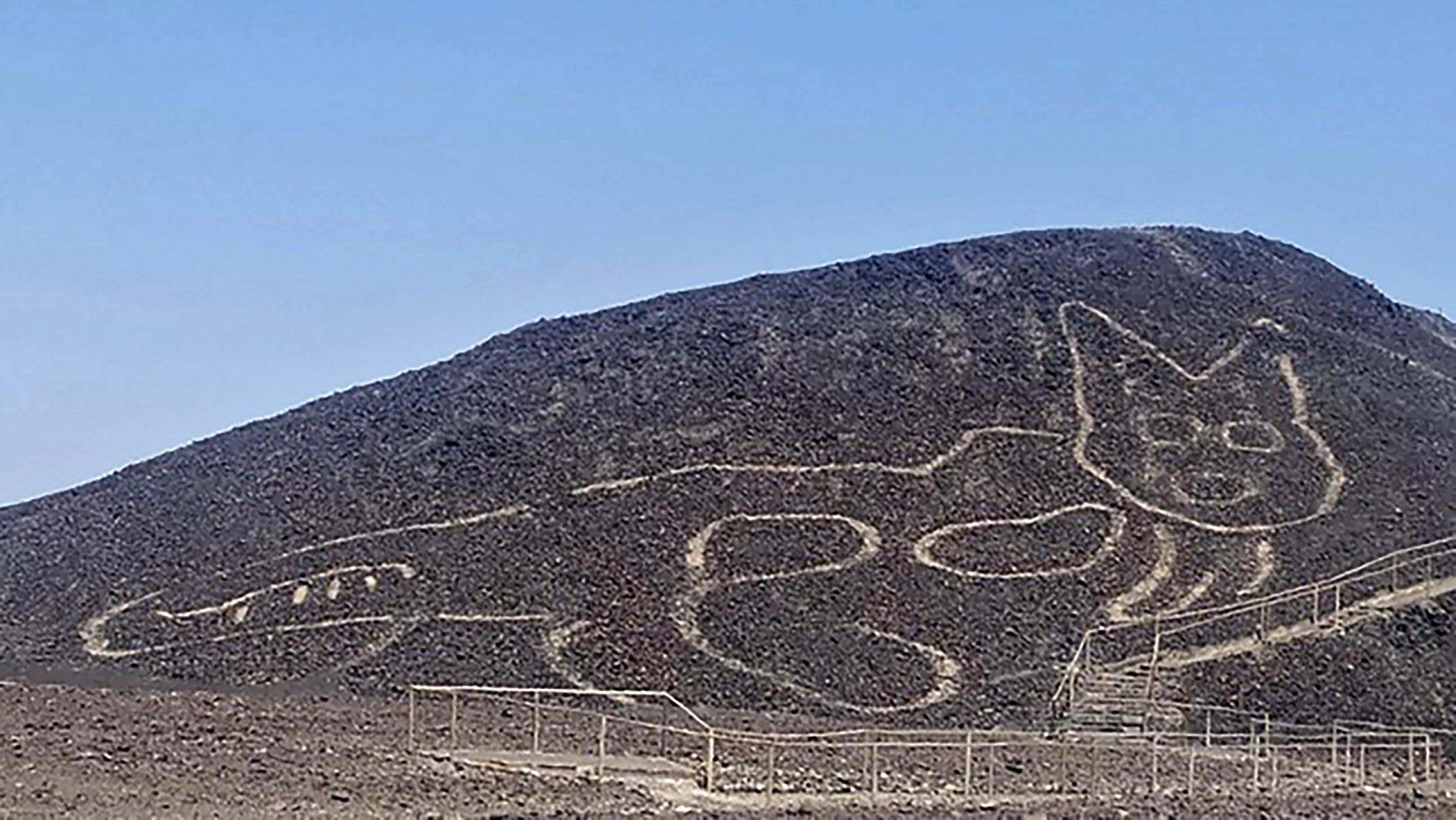Giant 2,000-year-old cat found etched into desert hillside in Peru
About 37-meter-long, the figure is estimated to be around 2,000 years old and made up of groves carved into the mountain coupled with groupings of stones

Your support helps us to tell the story
From reproductive rights to climate change to Big Tech, The Independent is on the ground when the story is developing. Whether it's investigating the financials of Elon Musk's pro-Trump PAC or producing our latest documentary, 'The A Word', which shines a light on the American women fighting for reproductive rights, we know how important it is to parse out the facts from the messaging.
At such a critical moment in US history, we need reporters on the ground. Your donation allows us to keep sending journalists to speak to both sides of the story.
The Independent is trusted by Americans across the entire political spectrum. And unlike many other quality news outlets, we choose not to lock Americans out of our reporting and analysis with paywalls. We believe quality journalism should be available to everyone, paid for by those who can afford it.
Your support makes all the difference.Peruvian archaeologists have uncovered an enormous cat etched into a hillside in the desert of the famed Nazca Lines. Home to the geoglyphs of a hummingbird, a monkey, a spider and a human, the newly revealed form of the feline is about 37-meter-long, and expected to be dating back more than 2,000 years.
The figure is made up of a long body, striped tail and head with distinctive pointed ears. It emerged during work to improve access to one of the hills that provides a natural vantage point.
Johny Isla, the Peruvian culture ministry's specialist for the Nazca-Pampa region, said it was estimated to be around 2,000 years old and made up of groves carved into the mountain coupled with groupings of stones.
"The figure was in the process of disappearing because it was on a slope that was subject to quite extensive erosion which resulted in it being hidden for many years," he said.
A UNESCO world heritage site since 1994, the Nazca Lines are drawn in geometric patterns and distinct animal shape. About 80 to 100 new figures emerged over recent years in the Nazca and Palpa valleys, all of which predated the Nazca culture (AD200-700), Mr Isla told The Guardian. “These are smaller in size, drawn on to hillsides, and clearly belong to an earlier tradition.”
Found in a region of Peru just over 200 miles southeast of Lima, near the modern town of Nazca, the lines are a subject of mystery for over 80 years with questions about their formation and the purpose they served.
Peruvian archaeologist Toribio Mejia Xesspe was the first to systematically study the lines in 1926. However, since the lines are virtually impossible to identify from ground level, they were only first brought to public awareness with the advent of flight—by pilots flying commercial planes over Peru in the 1930s.
The area has been closed to tourists since March because of the coronavirus pandemic but is due to reopen on Nov. 10.
Additional reporting by agencies

Join our commenting forum
Join thought-provoking conversations, follow other Independent readers and see their replies
Comments